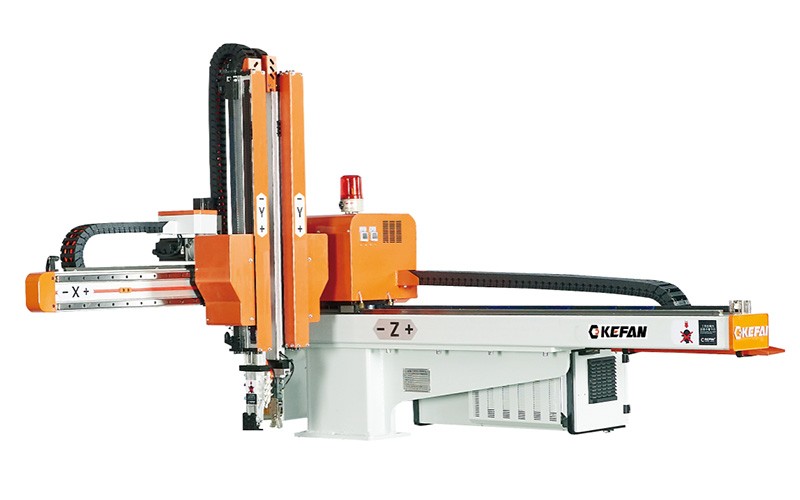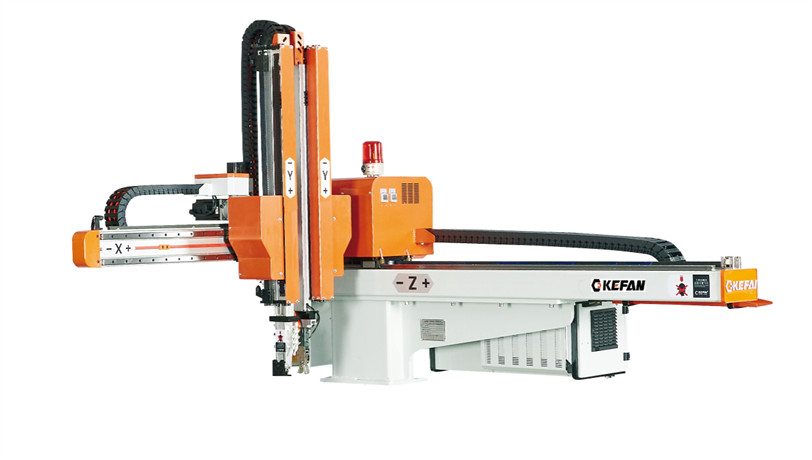

Generally speaking, for the production application fields where the injection molding machine needs to maximize the working efficiency and start-up time, people usually consider installing and using a Traverse Robot, Unplanned downtime can interrupt production, which is time-consuming and labor-intensive, and often causes cost increase due to overtime or emergency replacement of machined parts. Therefore, it is very important for operators to detect the signal that the manipulator needs maintenance. From the point of view of maintaining long-term operation, always paying attention to some important operating conditions will reduce downtime and decline the cost. Here are a few things to pay attention to.
1. Cycle time of manipulators
One of the key points to keep the manipulator running well is simple observation and listening, which can reveal a lot of information about the overall operation of the manipulator. Manipulators work through specific actions, so they listen to any abnormal sounds, such as howling, clicking, etc., which indicate that the bearings cannot rotate normally or some other component is stuck. The link part of the manipulator moves along the guide rail with a power cable and vacuum hose, and it will make a normal click sound, but the sound is smooth and stable. Check any bearings that can be observed to ensure that they rotate smoothly. Just need to check and listen to some signs of wear or adjustment, which can greatly help to keep the manipulator in the best running state.
2. Guide rails and bearings
Guide rails and bearings at all shafts should be kept clean and well lubricated. If the manipulator operates in a dusty environment, it is necessary to clean the guide rails frequently. If you find any metal fragments or powder, it may indicate poor lubrication. In order to ensure proper lubrication, it is very important to have a proper linear guiding system. Most manipulators have automatic lubrication systems and parts that need to be replaced regularly.
3. Drive system
If the manipulator is driven by assembly frame-transmission gear, pay attention to whether there is any hesitation or shaking during operation. All movements except smooth and smooth movements can indicate that the drive system is damaged or some foreign objects are stored inside. When the manipulator is pushed down, the way to quickly check the movement or backlash between the assembly beam and the transmission gear is to push and drag the moving arm and feel abnormal movement (different back and forth movements). However, due to the high accuracy of normal factory tolerances, this test method will be very inaccurate.
4. Pneumatic system
Including multi-axial servo drive, almost all manipulators will have pneumatic functions as long as there are wrist rotation and vacuum grasping actions. Pay close attention to the suction cup of the filter pressure regulating valve unit, because the accumulated water indicates that the humidity of the compressed air source passing through the system is too high.
5. Vacuum gripper loop
The vacuum should be formed nearly instantaneously, and the appropriate controller input should be equivalent to grasping the product. If you find that the vacuum is turned on, then the input light source appears, and the delay time exceeds 2 seconds, it indicates that there is a vacuum pipeline leak, defect or improper adjustment of the switching device. It can be easily tested through the external main control panel.
6. Pay attention to wiring wear.
When inspecting the surface of the manipulator, if black particles or powder are found, it indicates that the circuit wiring of the manipulator shows signs of wear. However, even if you can't find these wear signals, carefully look at all the power supply, transformer or encoder cables, both inside and outside the wiring path, because during the production cycle, the wiring of the continuous rubbing manipulator or the wiring connected to the cable guide rail will eventually wear and fail. Ensure the safety of the wiring tie and the reasonable installation of cables.
7. Check lubrication.
Unless there is evidence that the guide rail is not lubricated enough, the lubrication rod loaded by the manipulator only needs to be replaced once a year. Equipped with an automatic lubrication system, it can lubricate continuously along with the movement of a manipulator. However, if there are some surfaces on which the manipulator cannot move normally, these areas shall be lubricated manually, or the automatic system shall be lubricated by regular program control.
8. Check the molding equipment.
The standard manipulator is usually installed on the template of molding equipment. When the equipment is running fast, the vibration from the molding equipment may be transmitted to the robot and may cause damage. Simply observing the operation of molding equipment, ensuring that the mold movement is adjusted to a reasonable state, and reducing the shaking or vibration times can prolong the life of the manipulator. Under the condition of high-speed operation, the vibration frequency may be very high, so it is best to install the manipulator on a supporting structure independent of the molding equipment.
16 May 2022
16 May 2022
16 May 2022
